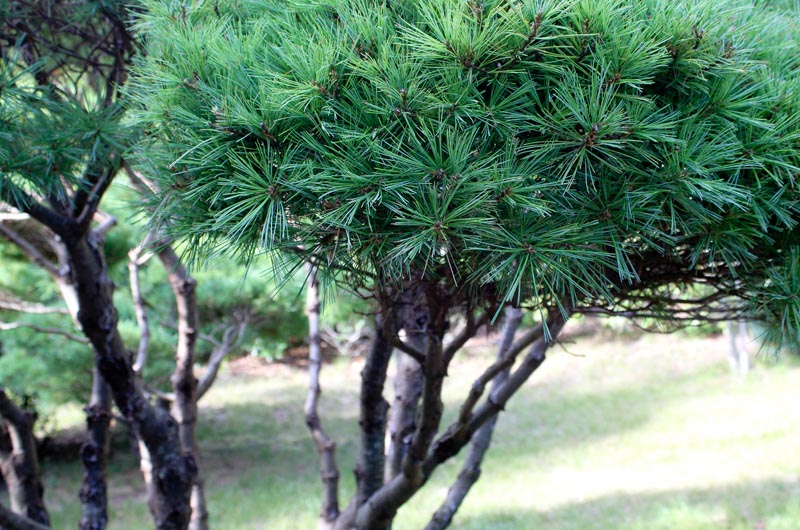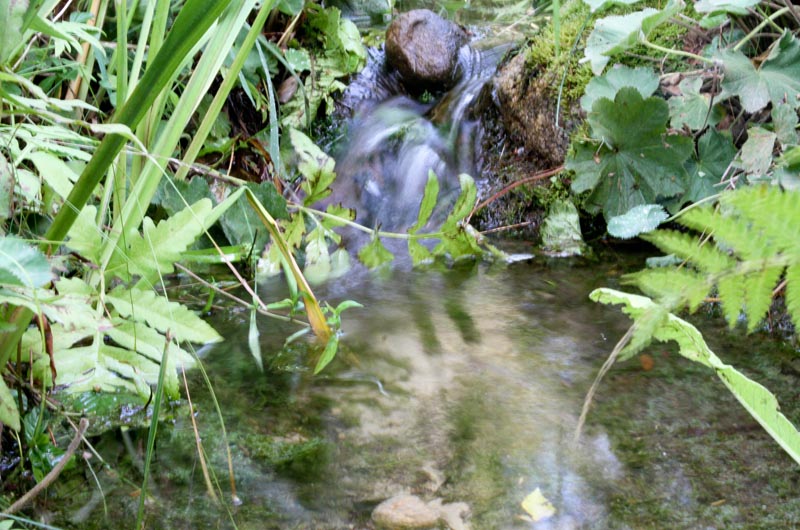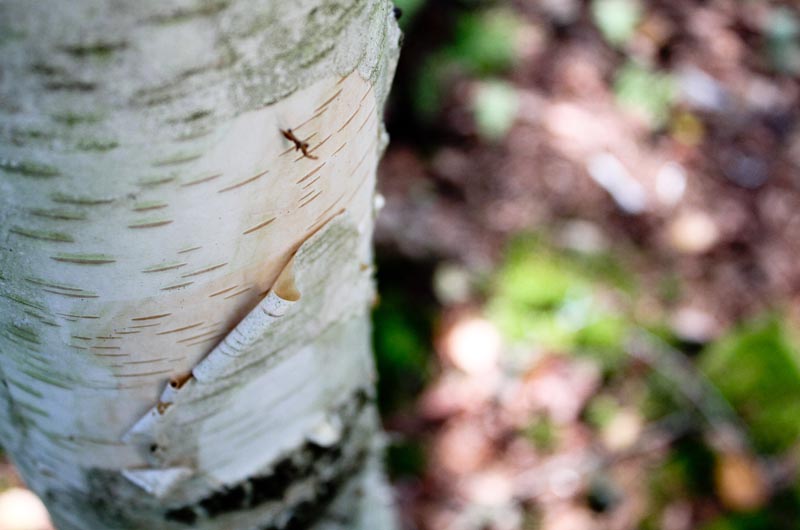Mytoi Garden on Chappaquiddick is quietly resplendent in late summer, with sunlight filtering through tall pitch pines onto the green leaves of floating water lilies. Thin streams trickle their way into a central pond, spanned by a wooden Japanese-style bridge, and footsteps become hushed on the recently laid crushed stone paths. A few of the Japanese maples are beginning to show their brilliant red leaves. Fall is on its way.
The garden is one of the gems of the Vineyard, and one that does take some extra effort to discover, situated as it is off a dirt road on Chappaquiddick. But people do make that effort. Anywhere from 3,000 to 4,000 visitors walk the grounds in the summer, according to the rough counts kept by The Trustees of Reservations.
“We’re always amazed at the number of people that find their way to Chappaquiddick,” said Don Sibley, longtime head gardener at Mytoi. Though he has recently stepped back into a consulting role, Mr. Sibley’s input and guidance has been integral to the development of Mytoi after it entered its second incarnation. The peaceful landscape of Mytoi was actually shaped by destruction wrought in Hurricane Bob, which hit the Vineyard in 1991.
When the garden was donated to the Trustees by the late Mary Wakeman in 1976, it was largely the same as it had been when Mrs. Wakeman’s architect Hugh Jones first designed it: tall groves of pitch pines and a pond ringed by daffodils. The property was smaller then, only three acres. Eleven acres were added in 1981, and Mrs. Wakeman created an endowment for maintenance of Mytoi. But because there was relatively little there, “there wasn’t a whole lot to do,” said longtime Chappaquiddick seasonal resident Lindsay Allison. Mrs. Allison began to volunteer at Mytoi 34 years ago.
“I started putting in those primroses all along the streams, just sort of cleaning things up, adding little things here and there,” she said. She received $500 a year to help pay for new plants. But it was all destroyed when Hurricane Bob hit.
Small tornadoes — a microburst — hit the heart of Mytoi, leaving flattened circles of pitch pines in their wake. When the 50-foot trees fell they crushed the plants beneath them.
“After all that happened, it was totally different there,” said Mrs. Allison. “It was sunny everywhere, and there’d never been sun at that garden.”
It took six weeks to remove the fallen pitch pines. The Trustees began to search for a person to help restore the garden, and found West Tisbury resident Mr. Sibley, who was familiar with Japanese-style gardens because of his time spent in Japan while with the United States Army. He was also familiar with gardening practices, thanks to one of his hobbies — cultivating bonsai trees — and familiar with Japanese aesthetics, thanks to his profession — teaching painting at the School of the Museum of Fine Arts in Boston.
Mr. Sibley and Mrs. Allison worked closely together figuring out how to restore Mytoi, and later collaborating with Julie Moir Messervy, a Boston-based landscape designer who also happened to be the first Western woman ever apprenticed to a Japanese gardener.
Ms. Messervy “had answers to things we hadn’t even thought of,” Mr. Sibley said.
“She came down for one day, and we went all through the garden,” Mrs. Allison said. “My husband had done a little sketch of how the garden was [then] laid out . . . Julie doodled around with a pencil on the paper, and we came up with a plan.” The plan included space for parking, which hadn’t existed before, and crafted Mytoi around a central loop, with visual focal points throughout.
“Different ‘rooms,’” Mrs. Allison said. The ‘rooms’ gave focus to the garden as well as to the fundraising campaign launched to pay for restoration — people could donate to a specific area of Mytoi.
It took more than a decade to raise the $50,000 needed for the initial plantings. During that time, volunteers continued to work on the grounds and plant what they could. In 1998, the Trustees and Mr. Sibley’s school in Boston sponsored a six-week trip for him to travel to Japan, where he toured gardens in Tokyo and Kyoto. The experience was tremendously important and eye-opening, Mr. Sibley said, but he notes that Mytoi has an aesthetic all its own.
“One of the things I’ve said from the beginning that I always like to underline is that never was I saying that I’m creating a Japanese garden,” he said. “It’s a Chappaquiddick-New England garden that’s been deeply influenced by Japanese design.” Mytoi is an interpretation of a style, he said, from the small shelter atop a hill to the wooden bridge across the pond.
The bridge is one of the success stories within a success story. The original bridge was a narrow red one that resembled those in Monet’s lilies paintings. But it was too small to accommodate increasing foot traffic, and was not connected to the far side of the pond, making traffic even more of a concern.
“It was just the wrong scale,” Mr. Sibley said. When the old bridge became rickety and in need of repair, it was replaced. The current bridge is a perfect place to stop and look for snapping turtles (there are three) and painted turtles in the pond, with enough room to allow others to pass by.
There is a switchback on the boardwalk past the bridge, and beyond that section lies Mrs. Allison’s favorite spot in Mytoi. It’s challenging to plant there because of soil conditions, so there are more native species and smaller plants.
“It’s an area where you’re looking up close. You have an intimate viewing of the plants and the moss,” Mrs. Allison said.
The best way to experience Mytoi is to bear left as you stroll through, as this is a good way to discover all of the now-furnished ‘rooms.’ The left orientation is another Japanese influence. In Japan, cars drive on the left. But there is no particular season that is best for visiting. Mytoi was designed to a be a four-season garden.
In the winter the coral bark maples are red against the green of the bamboo grove, and otters fish for goldfish from the frozen-over pond. And it is snow, not stone, that truly hushes footsteps.
“I like it every bit as much, but in a different way, in February as I do in June,” Mr. Sibley said.
On Saturday, Sept. 6, Kevin Keady and the Cattle Drivers will perform at Mytoi from 5:30 to 7 p.m.










Comments
Comment policy »